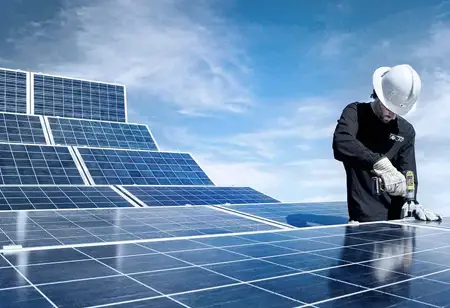Thank you for Subscribing to Energy Business Review Weekly Brief
Iron-Based Catalysts: A Promising Path Towards Economical and Greener Hydrogen Fuel Cells
The hydrogen fuel cell has long been considered an effective replacement for conventional internal combustion engines.

By
Energy Business Review | Friday, May 19, 2023
Stay ahead of the industry with exclusive feature stories on the top companies, expert insights and the latest news delivered straight to your inbox. Subscribe today.
Iron-based catalysts in hydrogen fuel cells enhance performance and durability while reducing environmental impact, making them crucial for a greener, cheaper, and sustainable energy future.
FREMONT, CA: The hydrogen fuel cell has long been considered an effective replacement for conventional internal combustion engines, as it produces clean, efficient, and environmentally friendly energy. Cost factors, particularly the high cost and scarcity of platinum catalysts, have prevented the broad use of fuel cell technology. By substituting iron for platinum in hydrogen fuel cells, researchers have made substantial progress towards lowering prices and improving sustainability. This development has the potential to significantly lower costs and improve the environmental impact of fuel cell technology.
Understanding Hydrogen Fuel Cells
Hydrogen fuel cells are fundamentally electrochemical processes that only produce water as a byproduct when converting hydrogen and oxygen into power. They function by converting chemical energy into electrical energy through a series of internal cell reactions.
An anode, a cathode, and an electrolyte make up the three major parts of a standard hydrogen fuel cell. Protons and electrons are created when hydrogen molecules are oxidised with the help of the anode. While the electrons move through an external circuit, the protons move through the electrolyte, creating an electric current that can power a variety of devices. Protons, electrons, and airborne oxygen come together at the cathode to create water.
Advantages of Hydrogen Fuel Cells
1.Clean and Sustainable: Hydrogen fuel cells offer a sustainable alternative to fossil fuels as they produce no greenhouse gas emissions or pollutants. When hydrogen is sourced from renewable resources, such as water electrolysis using renewable electricity, the entire process becomes carbon-neutral.
2. High Energy Efficiency: Hydrogen fuel cells have high energy conversion efficiency compared to traditional combustion-based technologies. They can reach efficiencies of up to 60 per cent, which significantly exceeds the efficiency of internal combustion engines.
3. Versatility: Hydrogen fuel cells have a wide range of applications. They can power anything from vehicles, including cars, buses, and trains, to stationary power systems for homes, buildings, and even portable devices. The versatility of hydrogen fuel cells makes them adaptable to various energy demands.
Current Applications
1. Transportation: Hydrogen fuel cells are gaining traction in the transportation sector. Fuel cell electric vehicles (FCEVs) offer longer driving ranges and shorter refuelling times compared to battery-powered electric vehicles. Major automobile manufacturers have already introduced FCEV models, and efforts are underway to establish hydrogen refuelling infrastructure globally.
2. Power Generation: Hydrogen fuel cells are being utilized in stationary power systems to generate electricity. These systems can provide backup power during grid outages or act as primary power sources for remote areas. They are particularly valuable in off-grid applications, where their clean and silent operation is advantageous.
3. Industrial and Commercial Use: Hydrogen fuel cells find applications in various industries, including manufacturing, telecommunications, and logistics. Forklifts powered by fuel cells are increasingly being used in warehouses, providing an emission-free alternative to traditional internal combustion forklifts.
The Road Ahead
The future of hydrogen fuel cells looks promising. As renewable energy sources become more prevalent, hydrogen can be produced sustainably, leading to an even greener energy ecosystem. Continued research and development, coupled with collaborations among industry, academia, and governments, will accelerate the deployment of hydrogen fuel cells and unlock their full potential.
A significant advancement in the search for less expensive and more environmentally friendly energy sources is the use of iron as a catalyst in hydrogen fuel cells. With iron in place of the pricey and limited platinum, fuel cell technology is made more widely available, reasonably priced, and environmentally friendly. By reducing the cost of fuel cells, this innovation also reduces environmental damage from platinum extraction. Iron-based catalysts have the potential to transform the energy industry and pave the way for a future powered by efficient and clean hydrogen fuel cells with continued research and development.






